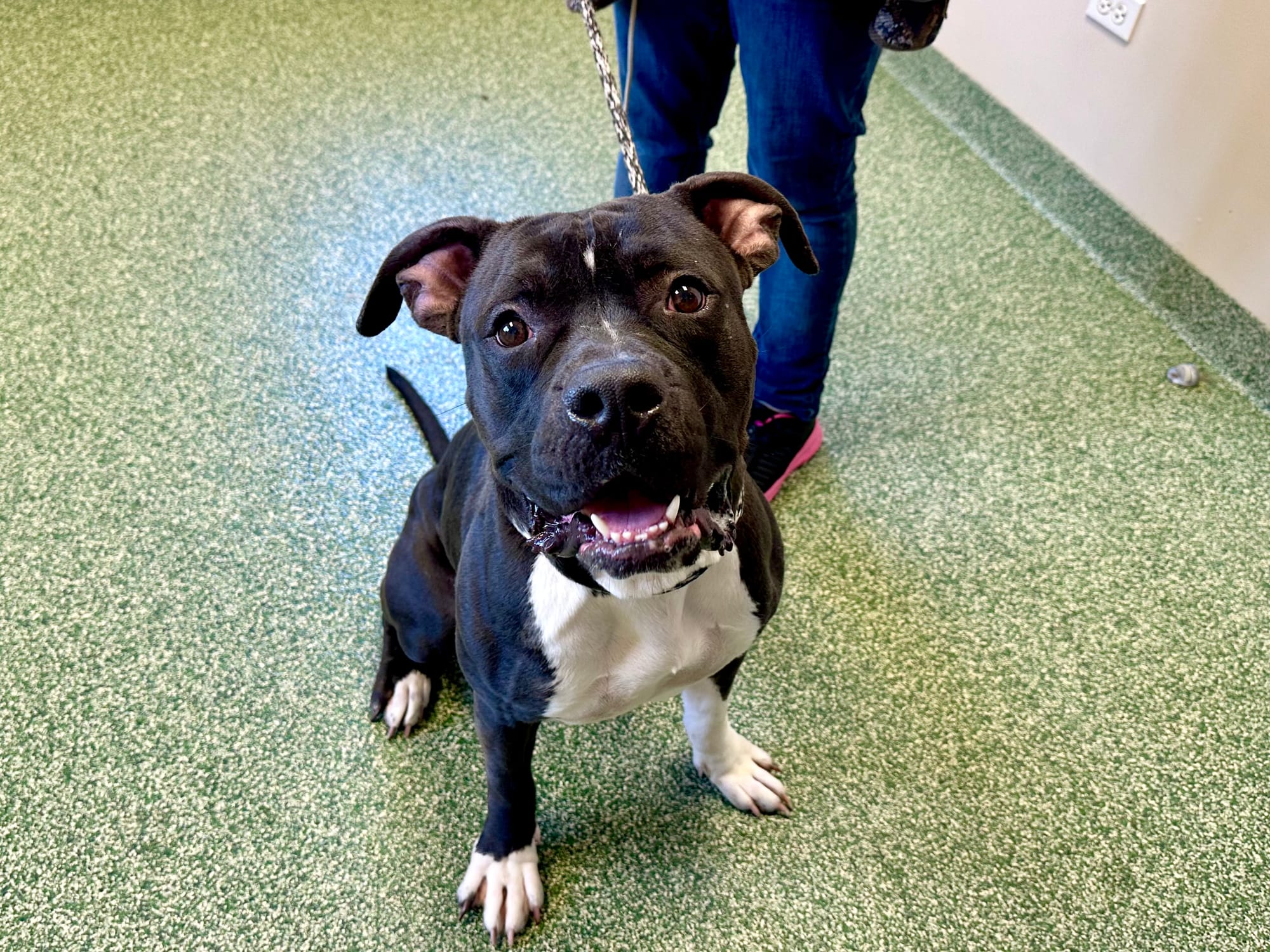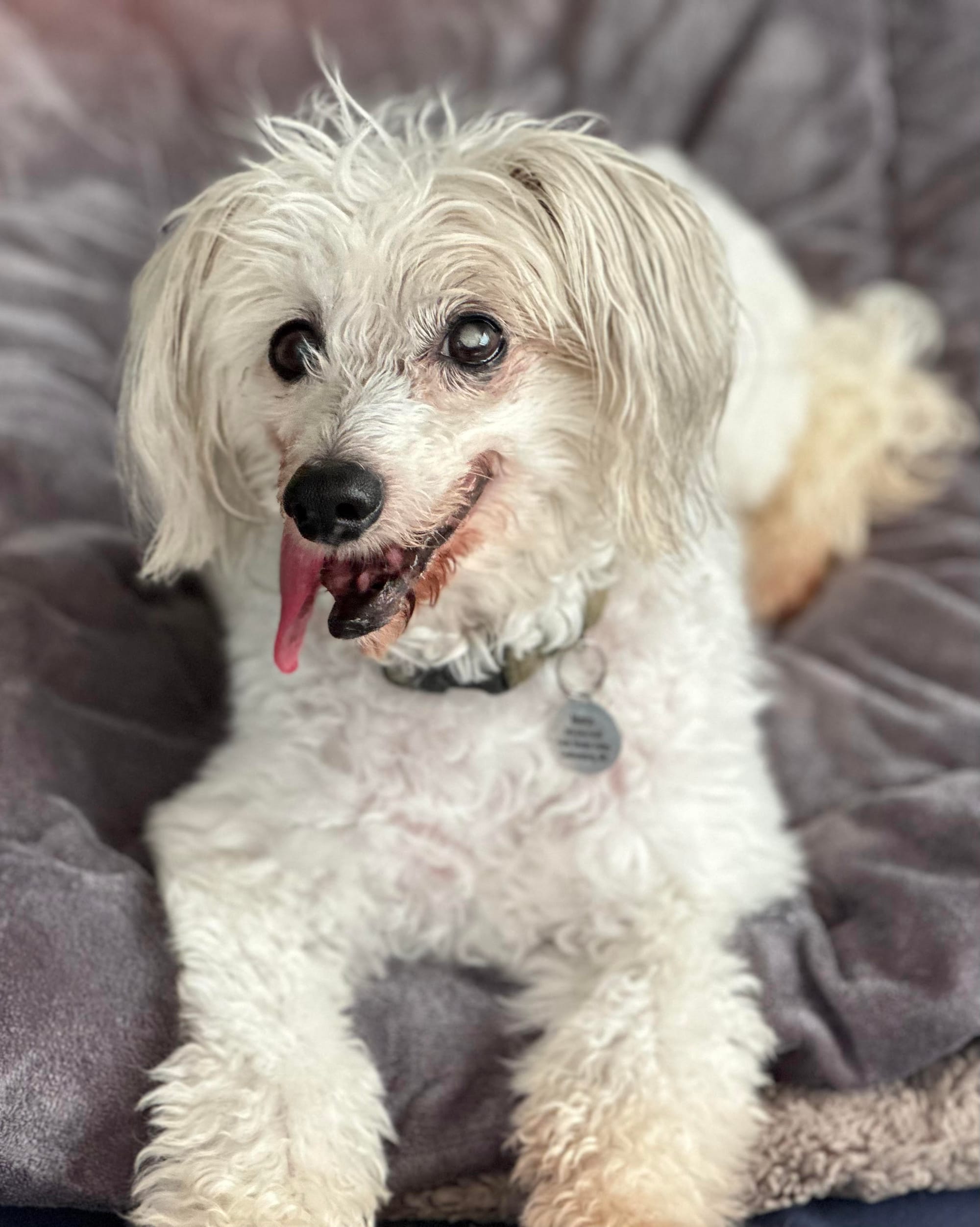Welcome to the ultimate destination for celebrating the unsung heroes of the dog rescue world. At Rescue Spotlight, we're dedicated to highlighting the remarkable journeys of rescue organizations and the incredible individuals behind them.
Whether you seek heartwarming tales of second chances, inspiring stories of rescue missions, or practical insights into the world of dog adoption, you'll find it all here.
Today, we're privileged to interview Adri Herron, one of the devoted people behind Sanctuary Rescue You can find a direct link to their Instagram here.
Here is their story:
What inspired you to start or become involved with this rescue organization?
Herron: I founded it in 2010 somewhat accidentally but here we are almost 14 years later.
Can you tell us about a particularly memorable rescue mission or adoption story that stands out to you?
Herron: Goosie is always my go-to favorite rescue. She was born without a nose, which is apparently indicative of a rare brain condition. From our research dogs born with this condition only survive a few days, maybe a week or two. Goosie survived 15 months and was WILD! She had so much personality and was so inspiring. Her story on the Dodo has over 15 million views and she was featured on numerous sites and publications. Goosie was such a tiny celebrity and gave so many people hope and joy. Her spirit still fills the rescue five years after death.
What are some of the biggest challenges you face as a rescue organization, and how do you overcome them?
Herron: Money and fosters - everyone’s answer. Paying for it all is a challenge that is never overcome. Finding willing and able foster homes is equally as challenging. We have some of the BEST donors and fosters but we could use 1,000 more just like them. And finally, finding enough hours in the day. Rescue never ends. It’s 24/7 and the more you do, the more there is to do. Luckily I love every minute of it so staying busy is a blessing.
How do you select the dogs that your organization takes in, and what criteria do you use for adoption?
Herron: We are contacted directly by the shelters and they ask us to take the dogs that they think are a good fit for our program. We like dogs that are a little broken - perfectly imperfect - we like dogs that look like fat potatoes; we like to help pregnant dogs and orphans, you get the idea. We’ve been working with many of these shelters for over a decade and they know a “Sanctuary Rescue” dog as soon as they see them and reach out. Ultimately, though, we will pull any dog we have a foster for. Recently a foster told me she likes senior beagles so we had a senior beagle at her house a couple of days later.
In what ways do you work to rehabilitate and socialize dogs before they are adopted?
Herron: We don’t adopt out dogs until we feel really sure about their temperament. If an adult dog needs a little confidence or manners we do whatever our trainer suggests. When we have puppies we work hard to socialize them not only to people but to all sorts of sights, sounds, smells, and situations. We have a puppy playground at our rescue resource center that’s designed specifically to give them experience with different textures and obstacles and build confidence.
What role do volunteers play in your organization, and how can people get involved?
Herron: Our volunteers are invaluable and we really have the most dedicated, fun, passionate, animal-loving volunteers East of the Mississippi. They do everything from transporting dogs from shelters to helping take adoption pictures to dog handling at adoption events to puppy wrangling at events and so much more. Our volunteers are like family and they not only love helping animals, but they really enjoy spending time together so volunteering with Sanctuary Rescue is always fun. People get involved by filling out a volunteer application on our website. Within a week we’re usually putting them to work.
Can you share some success stories of dogs who were once in your care and have now found loving forever homes?
Herron: We went to visit a new rescue coordinator at a local shelter and as she was touring us around the building, she pointed to a kennel and said “that dog is going to be euthanized”. He was a skinny, adult, run-of-the-mill hound dog, which are unfortunately a dime a dozen in shelters. This guy had a badly broken leg and the shelter didn’t have the resources to fix the leg and even if they did they didn’t feel great about his adoption prospects. We took him out in the yard to get an idea of his personality and found him to be a big goofball. We found a foster that night, got his leg surgery sponsored by a local shelter medical fund (the Tommie Fund) and he had surgery, got neutered, microchipped, vaccinated, recuperated, and was adopted almost a month to the day later. If we hadn’t walked into the shelter that day he would have been euthanized for no other reason than a broken leg. We were only able to save him because a foster family stepped up to the plate. And he’s now a spoiled, suburban, goofball with three legs.
How does your organization collaborate with other rescues, shelters, or animal welfare organizations?
Herron: We are always happy to help when and where we can. We have a couple of more rural rescue partners that we work with often and take dogs from on a regular basis. We have specialized experience in raising cleft lip/palate puppies and failure to thrive puppies and we often transfer them in from other rescues that feel like they are in over their heads with these special cases. Our favorite outlet of collaboration has happened in the last year when we opened our rescue resource center, Liz’s Place. We have a low-cost/no-cost clinic where we are able to offer free vaccines and wellness to our shelter partners. We also host a monthly adoption event for our more rural shelter partners called BetterTogether. We offer a place for shelters that don’t receive much adoption foot traffic a place to come showcase their adoptable animals in a more populated metro area. Sanctuary Rescue provides the location, the marketing, and the volunteer handlers. This event has been very successful for these smaller shelters.
What initiatives or programs does your rescue have in place to promote responsible pet ownership and prevent pet homelessness?
At our rescue resource center we have regular low-cost/no-cost vaccine and wellness clinics to help anyone in the community struggling to provide vet care for their pets. While they are there we always ask if they need anything else and we try to provide them with any food and supplies that would be helpful to keep the dogs in their homes. We also host a monthly “Ask A Trainer” session where anyone can come out and talk to a professional dog trainer about any concerns or issues they’re experiencing at no cost to them.
Looking ahead, what are your organization's goals and aspirations for the future?
Herron: We hope to keep saving animals and helping our community through high-quality rescue and innovative outreach initiatives. Our next big plan is a spay/neuter clinic. We really love helping shelter dogs and empowering pet owners, and we will continue moving forward with both of these as long as we can keep making a positive difference.

